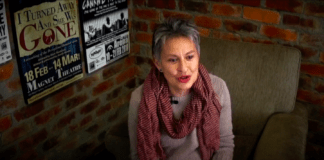A Paper by Nina Helene Jakobia Skogli University of Agder (Norway)
Presented at the Conference of the International Theatre for Young Audiences Research Network (ITYARN), part of the ASSITEJ Artistic Gathering 2019 in Kristiansand, Norway.
Abstract: In January and February 2019, 20 children performed their own future according to statistical prognoses at the Betty Nansen Theatre in Copenhagen. The performance Mod Alle Odds (Meaning Against All Odds in English) by Fix & Foxy addresses a central Scandinavian idea, that we all have equal opportunities, despite being born in different socio-economic environments. But statistics tells us otherwise. Where we grow up, our parents’ occupations etc. do matter. The performance exemplifies statistics and shows us optimism, pessimism, and injustice. It is a performance that echoes the theme for this ITYARN event and ASSITEJ Artistic Gathering 2019, when it comes to “confronting the present” and “presenting childhood” (and indeed adulthood). Mod Alle Odds shows actual children on stage, performing for an audience consisting of adults and teenagers.
For this paper, I want to focus on how the performance is experienced by the audience. By experienced, I mean not only what the spectators experience “here-and-now” during the performance, but also the affective, cognitive, and emotional processes that might continue after the so-called fall of the curtain. In February 2019, I brought Theatre students from the University of Agder to see Mod Alle Odds, as a part of my current Ph.D. project. During the spring, we explored different “post-performance methods” to answer the questions: “What processes are at work in the performance and what do they mean for those who experience and participate in it? How does this performance affect us?” Mod Alle Odds is a complex event since it addresses our present, our imagined future, and our statistical future. The agenda for this research is to provide a pluralism of methodology when it comes to figuring out what a complex performance actually means for those who engage as audience members and to explore how different post-performance events not only gives audience members a space to figure out their own experience. It also to examine how these events also contribute in the making of the experience itself as a creative and interpretive activity, both in a social and individual context.
A key concept that I would like to discuss in lieu of this is “post-performance”. This is a term that does not seem to be widely used, but we find it mentioned in the iconic Theatre Audiences (1997) by Susan Bennett. She explains that conventions such as applause make up a significant part of post-performance, as well as reading reviews, and talking with fellow spectators after the performance. She does not go into detail about how these processes of reception and interpretation are at work after the event – neither their significance for the overall experience of the performance – something we might call the accumulated experience. It might seem that research on post-performance events and their significance are underrepresented in Theatre theory. In this paper, I want to advocate for wider use of the term post-performance and show different ways of facilitating post-performance events. I want to use the concept of post-performance to shed some light on how we can understand and articulate the value and impacts of a performance like Mod Alle Odds.








